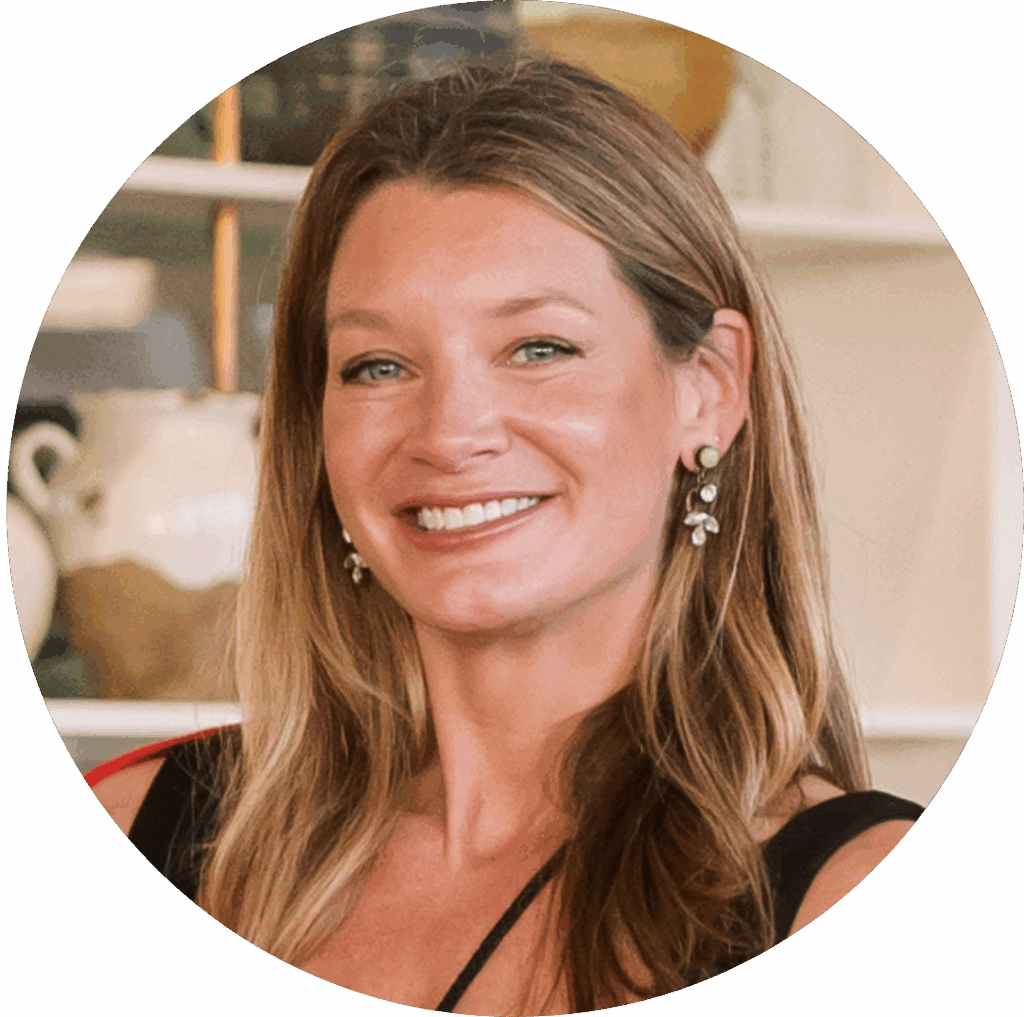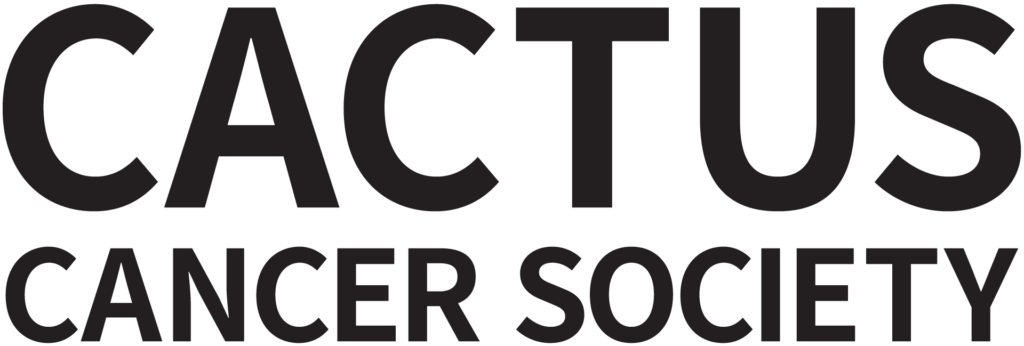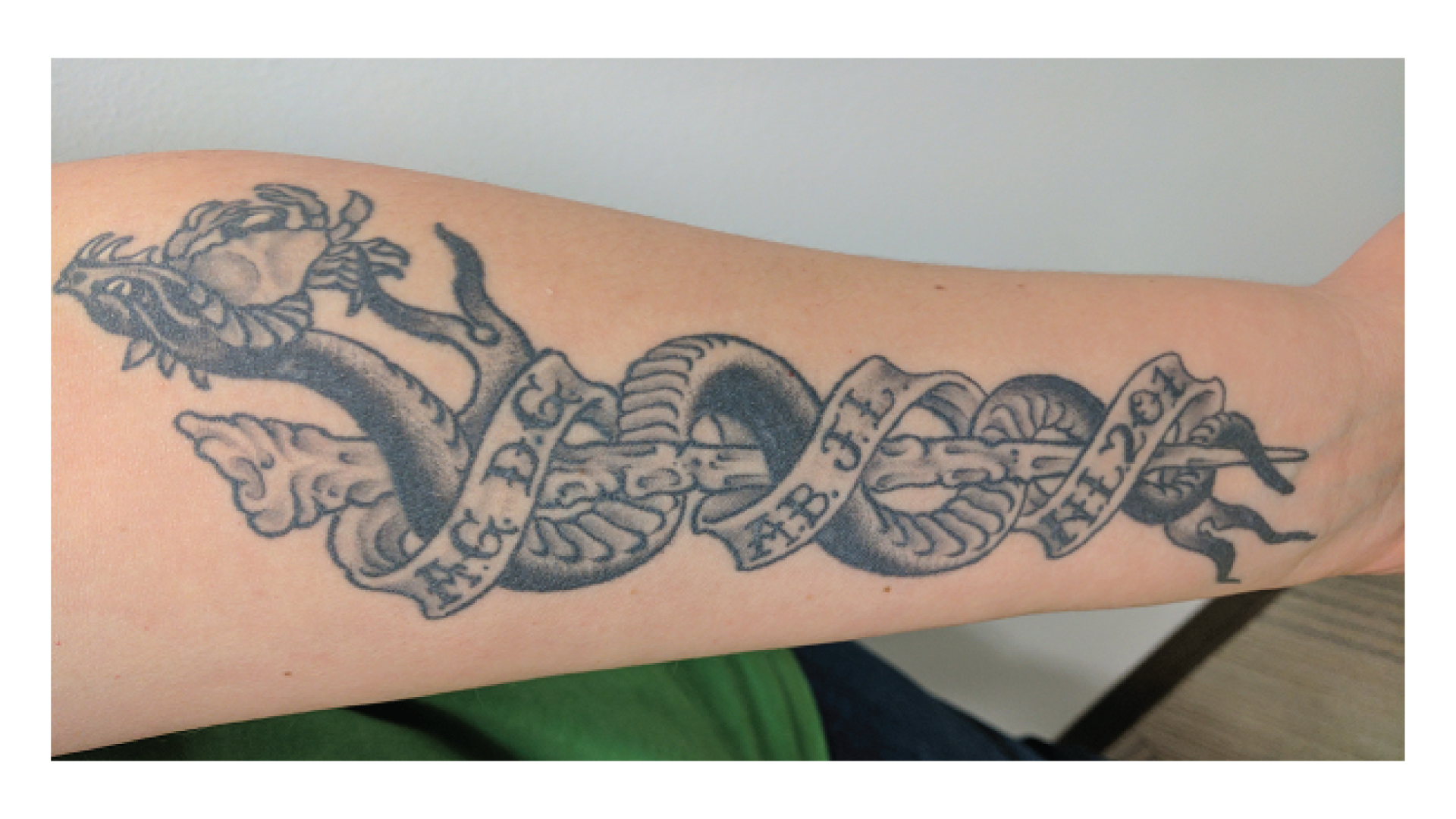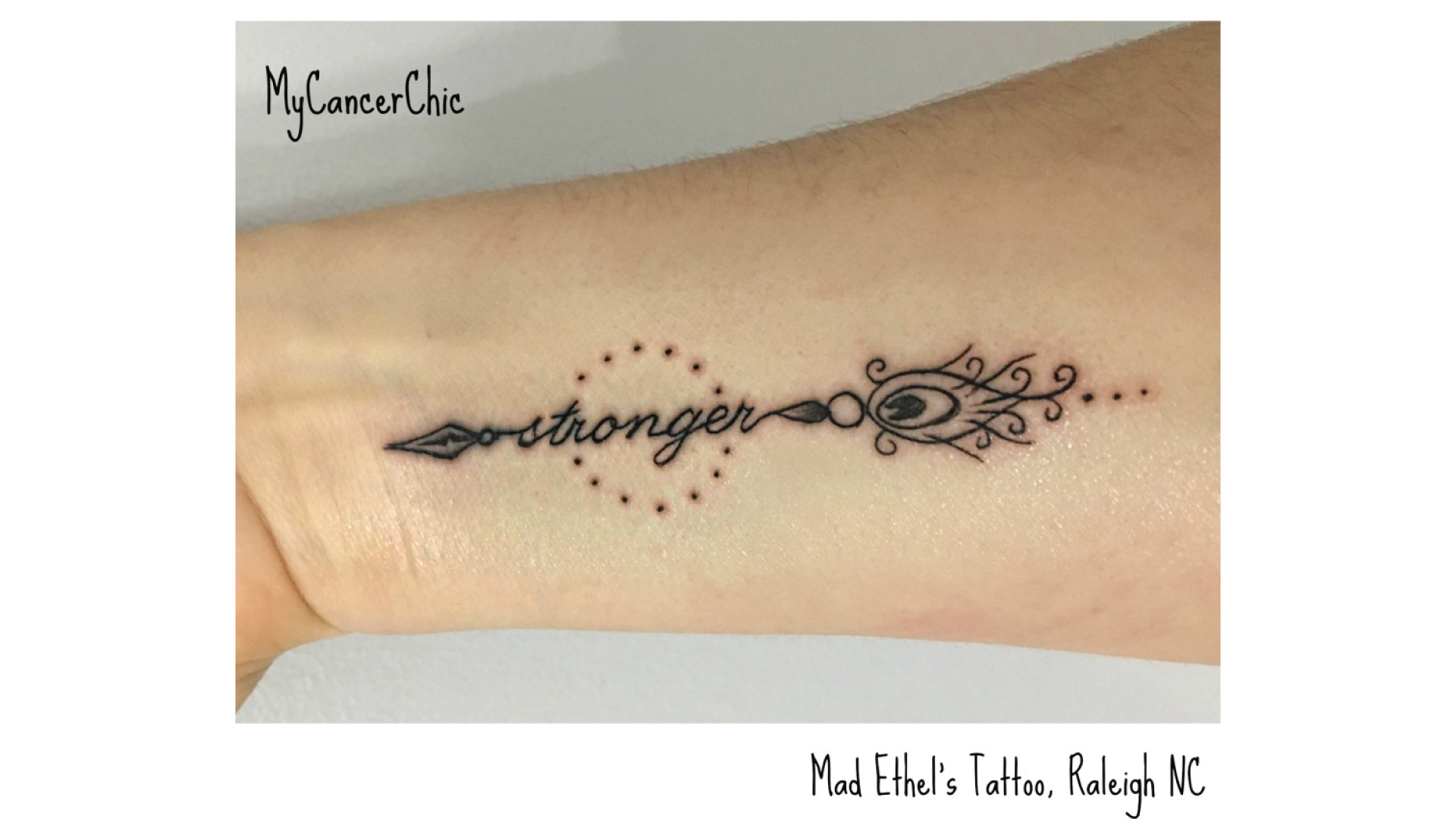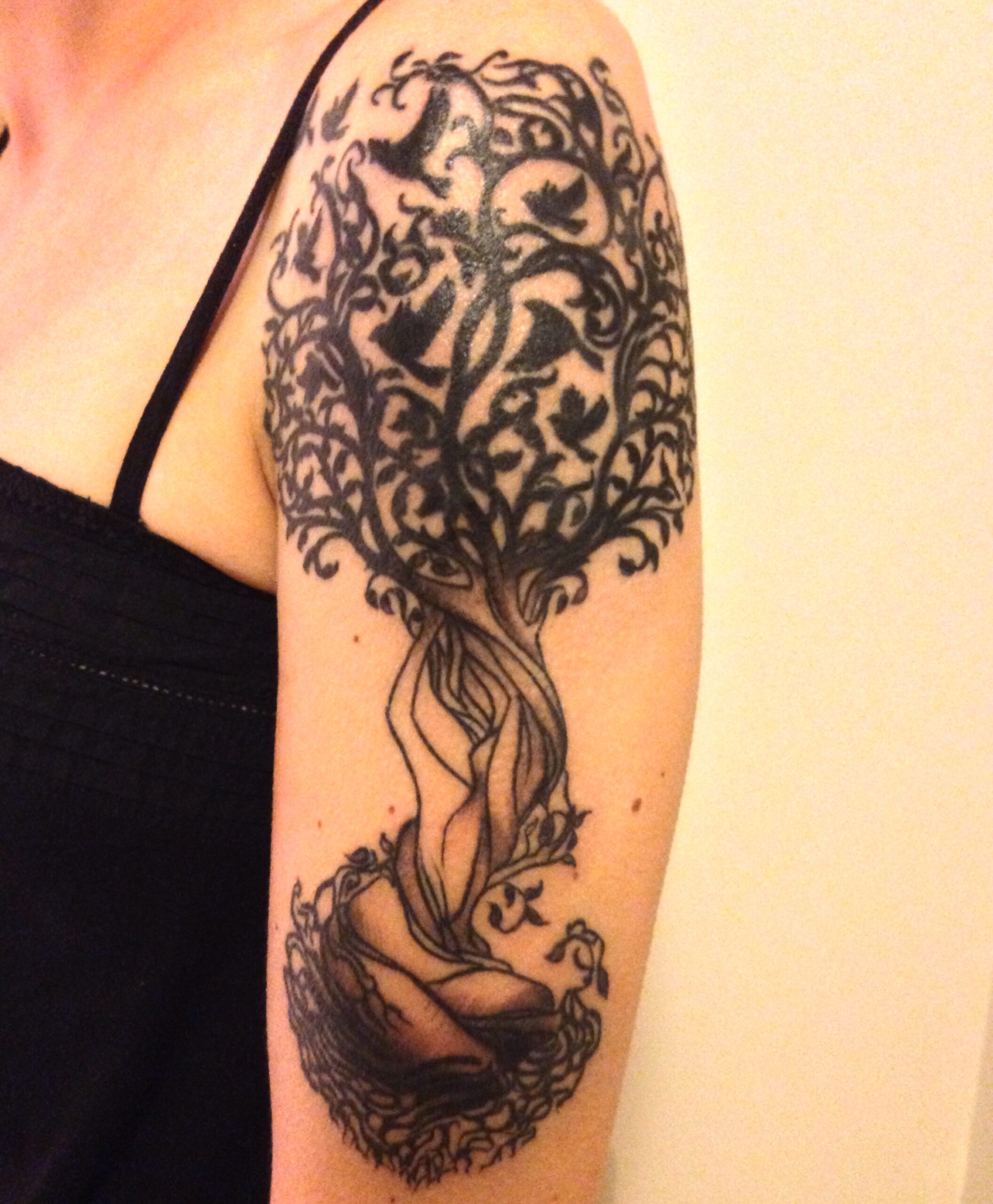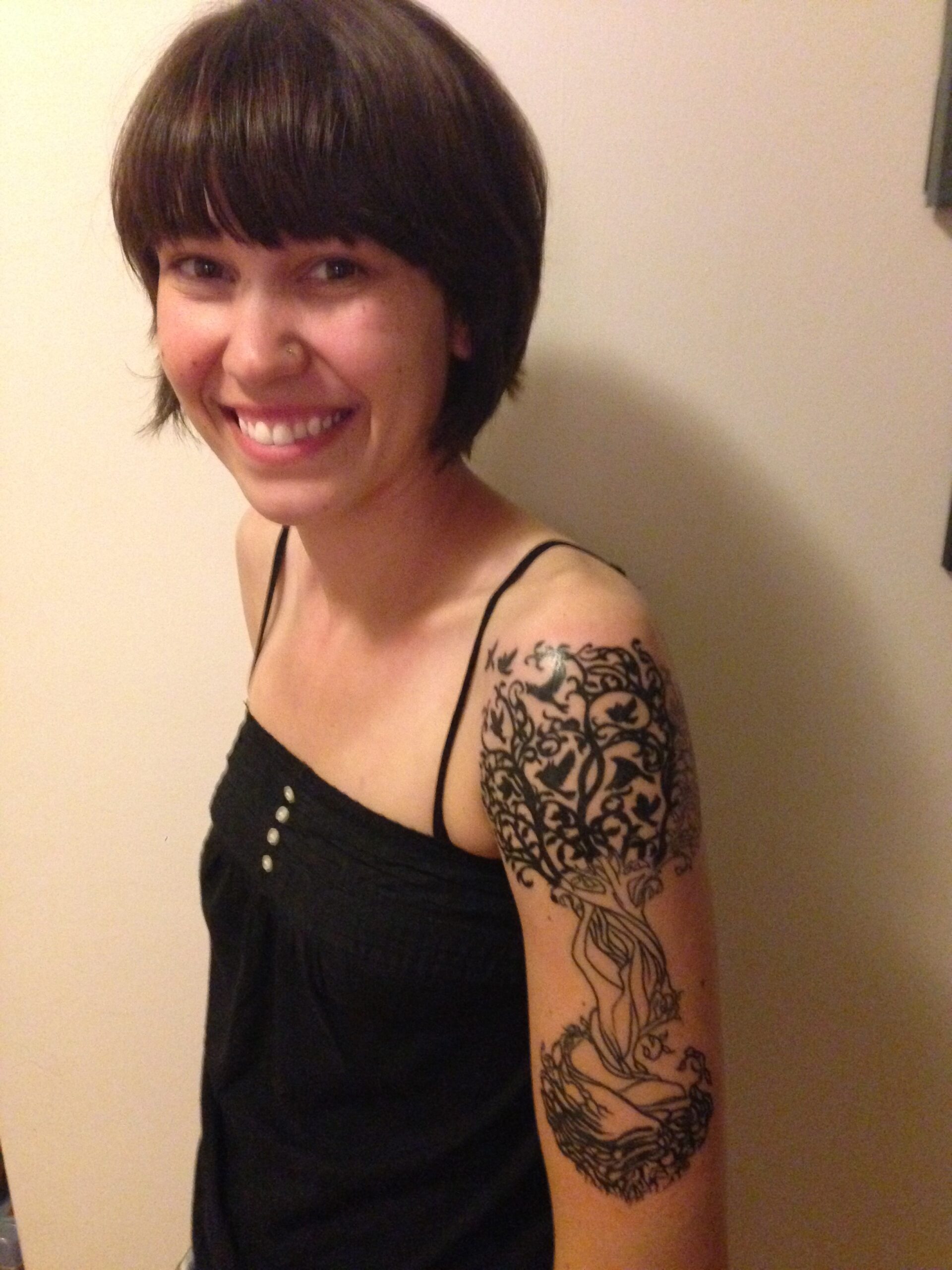This post is brought to us by Jordan! She’s a PhD student and a Hodgkin’s Lymphoma survivor talking with us today about survivorship tattoos.
I survived Hodgkin’s lymphoma in 2014, during the second year of my PhD studies. Although I had top-notch medical care, I found the information resources for young adults with cancer—people between roughly 18 and 40 years old—to be lacking. As a result, after my treatment ended, I decided to shift my thesis work to focus on information needs in the context of young adult cancer.
In my experience, much of the clinic-based information I received presumed I had specific resources to cope with the logistical, emotional, and financial impacts of cancer. For example, a lot of the care recommendations from my clinic and lymphoma non-profits assumed I had a spouse or partner who could cook and clean for me, or that I could drive a car to get to treatment, or that my workplace would be flexible about my schedule for treatment. Not everyone has these resources, or knows how to work around lack of resources, and particularly not as a young adult!
The best information sources for me through treatment and survivorship have been my “cancer peers,” primarily other young adults who share more things in common with me than just a diagnosis of cancer. These peers have been essential sources to help me sort through and understand written information from the cancer clinic, or to supplement information from medical websites with insights from their own experiences. I now study the phenomenon of young adults learning to cope with cancer, identifying who their cancer peers are, and their processes of finding, using, and sharing information on social media during and after cancer treatment.
Let me get a little academic for a moment. Cancer is one of the more potent examples of what we refer to in medical sociological literature as “socially constructed illness.” So although each type of cancer has a verifiable pathology and diagnosis as a disease, the cultural notion of cancer as an illness is laden with much meaning, and not an insignificant amount of fear. In short, Western culture ascribes shorthand archetypes to cancer patients (e.g., bald, sickly, but usually saintly and good-natured in media portrayals), while at the same time assigning hurtful stigma to the deeply emotional and morbid inner experience of cancer.
For this reason, I had a hard time filling my dissertation committee, because some faculty I approached told me my work “sounded depressing.” In the same vein, some colleagues do not attend my talks at conferences because they “can’t handle cancer stuff” (which always makes me think, gosh, I wish I’d had a choice on handling cancer stuff).
Conducting my thesis study has been a huge part of dealing with my cancer stuff. I always enjoy meeting or talking with other survivors, as most of my work is interview-based. Also, I believe the work of ethically, respectfully, and accurately depicting the experience of cancer—particularly from the perspective of young adults—is a crucial part of pushing back on the cultural stigma of cancer illness. And there are a lot of cancer survivors, including us young adults, who are already pushing back on that stigma by talking about our experiences, or working as advocates.
One type of artifact that seems to be popular among survivors for coping with and moving past hurt and stigma is the cancer survivor tattoo. Please do an image search for this phrase! Many of the examples that pop up in image search are beautiful cover-ups for scars, from mastectomies or port implants or PICC lines. Survivor tattoos often incorporate colored awareness ribbons, and some have more personal symbolism worked into them. I find this phenomenon really empowering and interesting—so of course, I am now studying it, and I have interviewed a couple dozen people who have survivor tattoos. I hope to circle back to this community once my research is published, to share some findings.
I told Mallory about my study and she invited me to write this blog post, and I’m very grateful. Although recruitment for the study is complete, I am always happy to connect with new survivors. If you would like to receive updates about this study, the link to sign up with your email address is here .
You can find other posts on Lacuna Loft’s blog about survivorship tattoos here.
